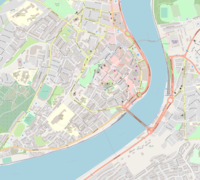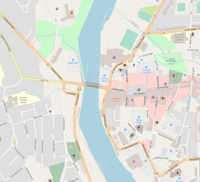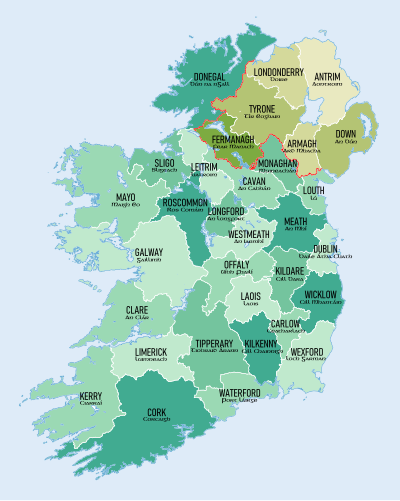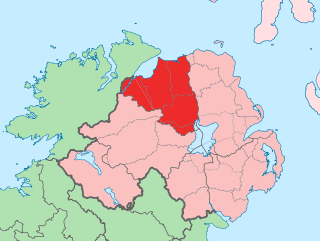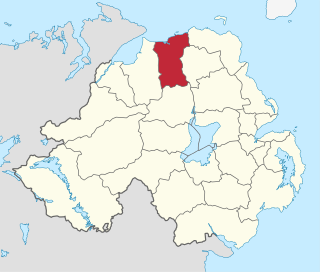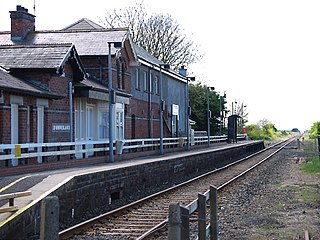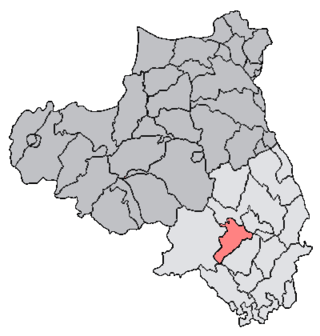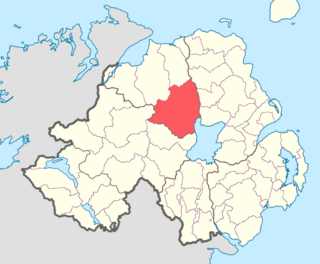Abbreviations and Key
| * | current monastic function |
|---|---|
| + | current non-monastic ecclesiastic function |
| ^ | current non-ecclesiastic function |
| = | remains incorporated into later structure |
| # | no identifiable trace of the monastic foundation remains |
| ~ | exact site of monastic foundation unknown |
| ø | possibly no such monastic foundation at location |
| ¤ | no such monastic foundation |
| ≈ | identification ambiguous or confused |
Locations with names in italics indicate probable duplication (misidentification with another location) or non-existent foundations (either erroneous reference or proposed foundation never implemented).
| NIEA | Scheduled Monument (NI) |
| NM | National Monument (ROI) |
| C.I. | Church of Ireland |
| R.C. | Roman Catholic Church |

(see right)
| Foundation | Image | Communities & Provenance | Formal Name or Dedication & Alternative Names | OnLine References & Location |
|---|---|---|---|---|
| Aghadowey Monastery # | early monastic site; hospital of St Gowry 1603 | Achad-dubthaigh; Achedoffey | [1] [2] 55°01′45″N6°39′27″W / 55.02928°N 6.65749°W | |
| Aghanloo Monastery | early monastic site; under erenaghs until 16th century | Ath-luga; Ath-longe; Allowa | [3] [4] [5] 55°05′37″N6°56′14″W / 55.093742°N 6.93718°W | |
| Agivey Monastery | early monastic site; purportedly founded 7th century by St Guar of Aghadowey; Cistercian monks grange of Macosquin | Augheve; Athgeybi | [6] [7] [8] 55°02′22″N6°35′16″W / 55.03937°N 6.58776°W | |
| Ballymagrorty Monastery (Derry Diocese) | early monastic site, founded 6th century by St Colmcille | Baile-meg-robhartaig; Baile-megrabhartaigh | 55°05′41″N6°39′49″W / 55.0946007°N 6.6635672°W | |
| Ballynascreen Monastery | early monastic site, founded 6th century by St Colmcille | Scrin-coluim-cille | [9] [10] 54°45′33″N6°52′00″W / 54.75914°N 6.86654°W | |
| Banagher Monastery |  | early monastic site, traditionally founded 11th century? by St Muriedbach O'Heney; under erenaghs until early 17th century | Bennchor; Bangoria | [11] [12] 54°53′19″N6°58′23″W / 54.8884889°N 6.9730569°W |
| Bovevagh Monastery |  | early monastic site, purportedly founded 575 by St Colmcille; oratory burned 1100; under erenaghs until 17th century | Both-mheidhbhe; Both-medhbha | [13] [14] 54°57′33″N6°56′44″W / 54.9591207°N 6.9455911°W |
| Camus Monastery | early monastic site, founded before c.580; under erenaghs until 16th/17th century | Camas; Cambos; Camsa | [15] [16] 55°06′02″N6°38′06″W / 55.10056°N 6.63513°W | |
| Church Island Monastery, Lough Beg | early monastic site; plundered by Ulidians 1129; under erenaghs until early 17th century | St Mochonna (possibly St Mochonna of Killyman) ____________________ Inistaiti; InisTeda; Ballyscullion; Inish Taoide | [17] 54°47′24″N6°29′05″W / 54.7899946°N 6.4847811°W | |
| Coleraine Monastery St Patrick's | early monastic site, founded 5th century by St Patrick; burned 731; suffered destruction 1171 and 1177; | Cuil Raithin; Cul-rathain; Colran; Bannin; | [18] 55°07′55″N6°40′07″W / 55.13202°N 6.66850°W | |
| Coleraine Monastery St Carbreus | early monastic site, founded 6th century by St Carbreus; dismantled in 1213, Drumtarsey castle erected on site | Cuil Raithin; Abbey of the Bann | [19] [20] 55°08′04″N6°40′43″W / 55.13432°N 6.67859°W (approx) | |
| Coleraine Friary | Dominican Friars founded 1244; Dominican Friars, Regular Observant reformed 1484; dissolved 1543 | St Mary | [21] [22] 55°07′49″N6°40′21″W / 55.13040°N 6.67237°W (approx) | |
| Coleraine Killowen | founded 1248 | Drumtarsy; Cill Eoghain - Owen's church; Cill-Eogain - St John's Church | [20] [23] [24] 55°07′42″N6°40′35″W / 55.12834°N 6.67638°W (approx) | |
| Cumber Monastery | early monastic site, traditionally founded 5th century by St Patrick; under secular erenaghs until early 17th century | Combior; Camer; Commyr | [25] [26] 54°54′20″N7°09′42″W / 54.905604°N 7.161785°W | |
| Derry Monastery ~ | early monastic site, traditionally founded c.546 by St Colmcille, but probably c.590 by Fiachra mac Ciárain mac Ainmerech mac Sétna; St Augustine's C.I. Church or St Columb's Church are cited as alternative possible locations of the monastery | Daire-calgach; Doire-Choluim-Chille; Daire Duib-recles; Cella Nigra | [27] 54°59′41″N7°19′26″W / 54.9947366°N 7.3239221°W possible or 54°59′34″N7°19′43″W / 54.9929°N 7.3285°W possible | |
| Derry Abbey | Augustinian Canons Regular — Arroasian — affiliated to SS Peter & Paul, Armagh; founded c.1233?; reportedly in very poor state of repair by 1411, due to warfare and adversity; churches desecrated and community expelled 1566; under occupation by English troops under Colonel Edward Randolph; restored? canons possibly briefly returned; dissolved 1576?; reoccupied by the English; Augustinian Friars refounded c.1643 | Cella Nigra | ||
| Derry Priory | Cistercian nuns founded 1218; dissolved 1512 | |||
| Derry Franciscan Priory | purported foundation of Franciscan Friars; (in 1609 the commissioners erroneously took the ruins of the Blackfriars house (see immediately below) to be Franciscan) | |||
| Derry — St Dominic's Priory | spurious accounts of earlier Dominican foundation; Dominican Friars founded 1274; dissolved 1576; briefly restored? | St Dominic | ||
| Desertmartin Monastery | early monastic site, apparently founded by a member of the O'Lynn family (suggested by the name Mainister O'Fhloinn); erenaghs until 16th century | Mainister O'Fhloinn; Moneysterlin | [28] [29] [30] 54°46′12″N6°40′15″W / 54.76996°N 6.67091°W | |
| Desertoghill Monastery | early monastic site, purportedly founded by St Colmcille; erenaghs until 16th century | Disert-ui-tuathghaill; Desert-O'Tuohill | [31] [32] [33] 54°58′23″N6°40′18″W / 54.97308°N 6.67169°W | |
| Donnybrewer Monastery | early monastic site | Domnach-dala; Domnach-dola | 55°02′46″N7°13′44″W / 55.0461037°N 7.2287786°W (approx) | |
| Drumachose Abbey | early monastic site, patronised 6th century by St Cainnech | Druimcoos; Dirumcoos; Dronagh; Drungrosa; Roa | [34] [35] [36] 55°03′03″N6°54′59″W / 55.05086°N 6.91641°W | |
| Dunboe Monastery | early monastic site, founded by St Adamnan; erenaghs until 16th century | Dun-bo; ~co Dun-mbó i n-Dal riatai; Duna-uó, a tempull; Durrbo, par. ecclesie de | [37] [38] [39] [40] 55°09′36″N6°48′40″W / 55.160055°N 6.811075°W | |
| Duncrun Monastery | early monastic site, founded by St Patrick | Dun-cruithne | 55°08′48″N6°56′01″W / 55.1466853°N 6.9335211°W (approx) | |
| Dungiven Monastery | early monastic site, founded 7th century, by St Naechtain? | Dun-geimin; Dun-giobhin; Dun-gevin | [41] 54°55′02″N6°55′18″W / 54.917333°N 6.9216549°W | |
| Dungiven Priory | Augustinian Canons Regular — Arroasian? founded after 1140? (after 1138?), purportedly by the O'Cahan family; dissolved before 1603; round tower incorporated into church, but collapsed c.1784 | St Mary | ||
| Errigal Monastery | early monastic site, purportedly founded 6th century by St Colmcille; destroyed by Norsemen 9th century; erenaghs until 16th/17th century | Airecal-Adamnan; Arragel; Temple Erigall; Airecuil, Cainnech | [42] [43] [44] 54°58′32″N6°44′03″W / 54.97550°N 6.73408°W (approx) | |
| Faughanvale Monastery | early monastic site, erenaghs until 16th century | St Canice (St Conici) ____________________ Nuachongbail; Fochwayll; Killeitra; Tircaerthian | [45] [46] [4] 55°01′57″N7°05′42″W / 55.032436°N 7.094947°W | |
| Kilcronaghan Monastery |  | early monastic site, patronised by St Cruithnechan; erenaghs until early 17th century | Cell-cruithneachain | [47] [48] 54°47′40″N6°44′00″W / 54.79438°N 6.73333°W |
| Killelagh Monastery | erroneously given as County Derry in Gwynn & Hadcock index — actually County Donegal | |||
| Kilrea Monastery | early monastic site; erenagh land until 1609 | Cell-reagh | [49] 54°56′00″N6°34′42″W / 54.93341°N 6.57827°W | |
| Lan More Friary ~ | Franciscan Friars, Third Order Regular foundation unknown; dissolution unknown; possibly County Londonderry or County Antrim | Landmore? | 55°02′05″N6°36′34″W / 55.0347919°N 6.6093536°W | |
| Lissan Monastery | early monastic site, founded before 744 | Lessan; ~Lessain episcopi; ~Lesan i Sliabh Callann,ó; ~o Lesan i Sliabh Callan | [50] 54°41′07″N6°46′05″W / 54.685226°N 6.7681474°W (approx) | |
| Macosquin Abbey + |  | Cistercian monks — from Morimond, France founded 1218; dissolved before 1600; granted to the London Companies (Merchant Taylors) authorities for the plantation of Derry; house named 'Glebe House' built on site of claustral buildings c.1770; scant remains of monastic church incorporated into St Mary's C.I. parish church, built on site | Clarus Fons; Magoscain; Moycoscain | [51] 55°05′59″N6°42′26″W / 55.0997568°N 6.7070842°W |
| Maghera Monastery + |  | early monastic site, founded 6th century by St Lurach; plundeded by the Norsemen 832; church burnt 1135; diocesan cathedral see transferred from Ardstraw c.1152; see transferred to Derry 1254 | Machaire-ratha-luraig; Rath-Luraig; Rath-lure | [52] [53] 54°50′32″N6°40′24″W / 54.84213°N 6.673466°W |
| Magilligan Monastery | early monastic site, erenagh land until early 17th century | Aird-megiollagain; Ardia; Scrin-i-nArdia; Ballynascreen-ardia; Tamlachta-ard; Tamlaght-ard; The Shrine of St Columb | 55°07′44″N6°56′33″W / 55.1289776°N 6.9424186°W (approx) | |
| Tamlaght Finlagan Monastery | early monastic site, founded 585 by St Fionn-logha; erenaghs until early 17th century; site occupied by remains of a church destroyed 1641 | Tamlacht-fionloga; Templefinlagan; Ballykelly | [54] 55°02′26″N6°58′50″W / 55.0404831°N 6.9806735°W | |
| Tamlaght O'Crilly Monastery | early monastic site; erenaghs until early 17th century | Ta, lachta-mac-ninaich | [55] [56] 54°53′37″N6°34′59″W / 54.89365°N 6.58304°W | |
| Termoneeny Monastery | early monastic site; erenaghs until early 17th century | ~in Enga; Termon-any Eanegea | [57] [58] 54°50′00″N6°40′02″W / 54.83334°N 6.66735°W | |
